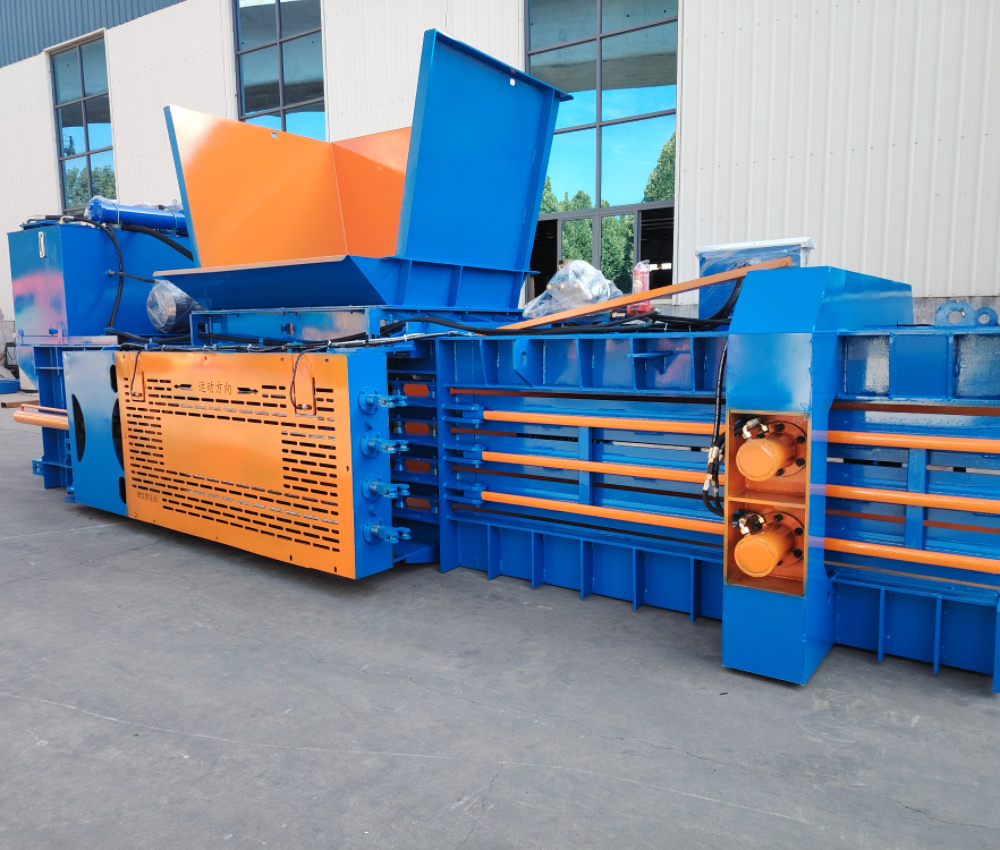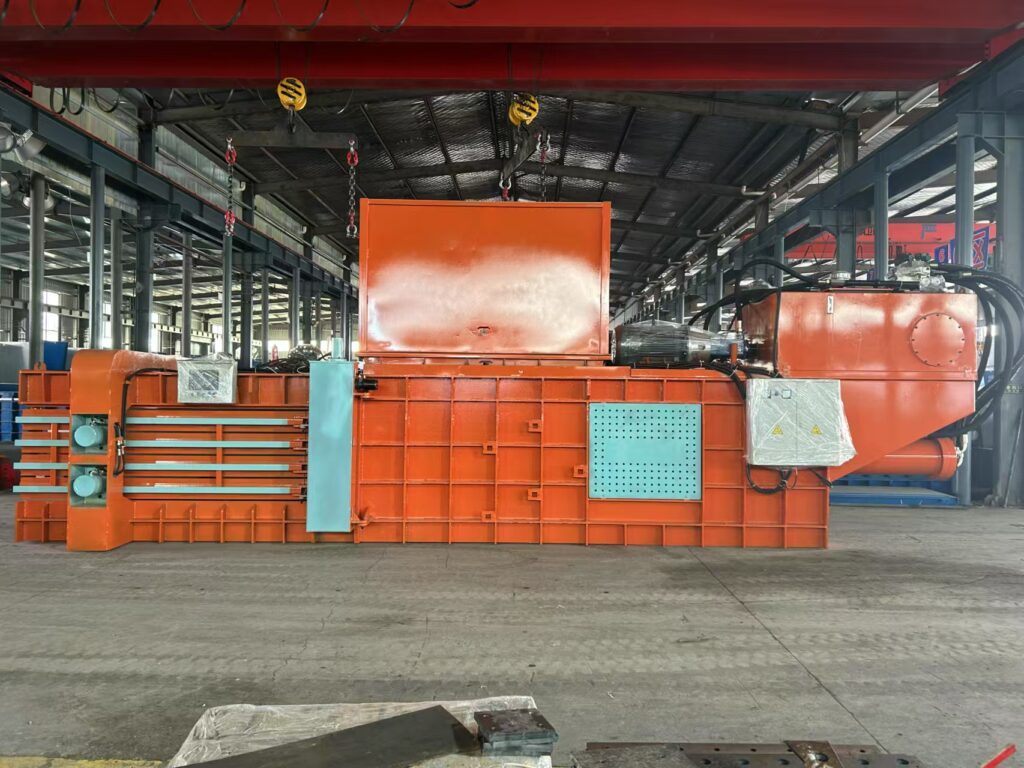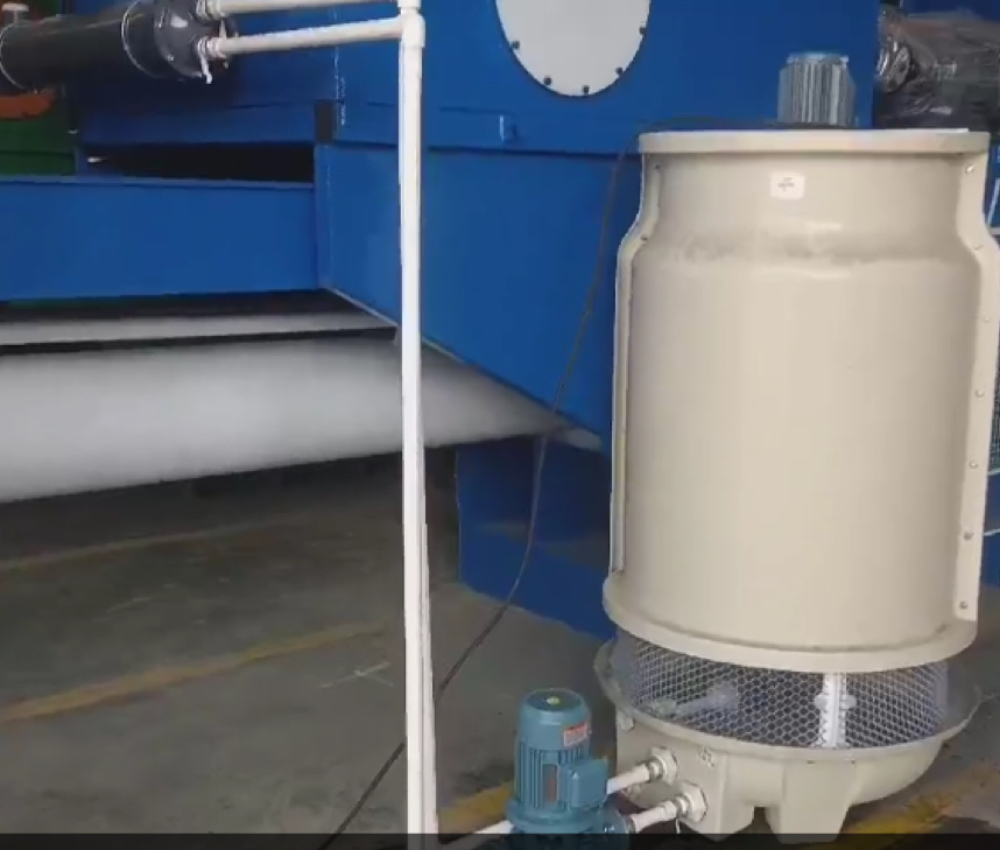What Is A Fully Automatic Horizontal Baler?

A Fully Automatic Horizontal Baler is a powerful waste recycling machine designed to compress large volumes of recyclable materials into compact bales. Unlike manual or semi-automatic balers, this machine completes the entire baling process automatically — from feeding and compressing to bale tying and ejecting.
It is commonly used for cardboard, waste paper, plastic films, PET bottles, textiles, and other recyclable waste. With its horizontal structure and advanced automation, it is ideal for large-scale recycling facilities, warehouses, packaging factories, and distribution centers.
The main components of the machine include a robust hydraulic system, an automatic feeding conveyor, a compression chamber, and an automatic tying system. This integration allows for non-stop operation and significantly improves recycling efficiency.
Why Choose A Fully Automatic Horizontal Baler?

1. Increased Efficiency
Automation allows the baler to handle tons of waste per hour with minimal human intervention. Workers only need to load materials onto the conveyor, and the machine does the rest.
2. Cost Savings
By reducing manual labor and speeding up the recycling process, companies save on operational costs. The uniform bale size also reduces storage and transportation expenses.
3. Consistent Bale Quality
Bales produced by a fully automatic horizontal baler are compact, uniform, and tied securely. This makes them easier to transport and sell to recycling plants.
4. Versatility
The machine is capable of baling different materials including paper, cardboard, plastic, aluminum cans, and textiles. This versatility makes it an excellent investment for businesses handling mixed waste.
5. Eco-Friendly Solution
Reducing waste volume helps businesses contribute to sustainability. Compact bales take up less landfill space and make recycling more efficient, supporting global green initiatives.
How To Use A Fully Automatic Horizontal Baler

Operating a fully automatic horizontal baler is straightforward because of its automation. Below is a step-by-step guide:
-
Material Feeding
Place waste material onto the conveyor system. The conveyor continuously feeds materials into the baler chamber. -
Compression Process
The hydraulic system activates, applying immense pressure to compress the material into a compact form. -
Automatic Tying
Once the bale reaches the pre-set size, the automatic tying system secures it with durable wires or straps. -
Bale Ejection
The finished bale is automatically ejected from the machine and ready for storage or transportation. -
Continuous Operation
The cycle repeats automatically, allowing 24/7 operation for high-volume waste processing.
Safety systems such as emergency stop buttons, automatic overload protection, and hydraulic safety locks ensure the operator’s security during operation.
Buying Guide: How To Choose The Right Model
When selecting a Fully Automatic Horizontal Baler, there are several key factors to consider:
1. Material Type
Determine what materials you need to bale. Heavy-duty models are recommended for metal scraps or dense plastics, while lighter models are sufficient for cardboard and paper.
2. Bale Size And Weight
Check the output bale size and weight. Standard bales range from 400–1200 kg. Choose a model that matches your storage and transportation requirements.
3. Capacity And Throughput
Evaluate how much waste your business generates daily. Machines vary in throughput capacity, ranging from 2 tons per hour to over 20 tons per hour.
4. Automation Level
While all models are automatic, some come with additional features such as adjustable tying systems, touch-screen control panels, and smart sensors. Higher automation increases efficiency but also raises cost.
5. Space And Installation
Measure your available space. A horizontal baler requires a larger footprint compared to vertical balers. Ensure you have sufficient floor space and proper electrical supply.
6. Maintenance And Support
Check whether the manufacturer provides training, spare parts, and after-sales service. A reliable support system ensures long-term operation and minimizes downtime.
7. Certifications And Safety Standards
Look for machines with international certifications such as CE and ISO9001 to guarantee quality and safety compliance.
Common Applications Of Fully Automatic Horizontal Balers
-
Recycling Centers: Handle mixed waste like paper, plastics, and textiles.
-
Factories: Manage production waste efficiently.
-
Supermarkets And Retail Chains: Compact packaging waste such as cardboard boxes.
-
Warehouses And Distribution Centers: Process large volumes of plastic wrap and cartons.
-
Municipal Waste Stations: Support city-level recycling initiatives.
Tips For Maximizing Efficiency
-
Regular Maintenance: Check hydraulic oil levels and replace filters on schedule.
-
Operator Training: Ensure staff understand safety protocols and machine operation.
-
Proper Material Sorting: Avoid mixing hazardous or non-recyclable items into the baler.
-
Monitoring System Settings: Adjust pressure and bale size according to material type.
Future Trends Of Fully Automatic Horizontal Balers
The demand for automatic baling press machines is increasing as industries move toward smarter and greener production. With the rise of e-commerce and packaging waste, recycling equipment is becoming essential for sustainable operations.
Modern horizontal balers are now integrating smart sensors and IoT technology. These features allow real-time monitoring, automatic fault detection, and predictive maintenance. Businesses can track bale output, energy consumption, and machine status remotely, reducing downtime and optimizing performance.
Another trend is energy-efficient hydraulic systems. Advanced balers use variable-speed pumps that consume less power while maintaining strong compression force. This not only saves costs but also lowers the carbon footprint of recycling facilities.
Furthermore, many companies are seeking customized baling solutions. Manufacturers now provide balers tailored to specific industries, such as textile recycling, PET bottle processing, or municipal waste management. This ensures maximum efficiency for each application.
By adopting a fully automatic horizontal baler, businesses not only streamline their recycling process but also prepare for future environmental regulations. With sustainability becoming a global priority, investing in advanced baling technology is a smart and forward-looking decision.
Conclusion
A Fully Automatic Horizontal Baler is more than just a recycling machine — it is a vital investment for businesses looking to improve waste management, cut operational costs, and support sustainability.
By automating the baling process, it delivers consistent bale quality, high efficiency, and significant labor savings. Whether you run a recycling facility, a factory, or a warehouse, this machine will transform how you handle waste.
When choosing a model, always consider your waste type, daily volume, space availability, and automation requirements. Partnering with a reliable manufacturer ensures you receive not only a machine but also professional after-sales service.
For businesses aiming to stay competitive while protecting the environment, a fully automatic horizontal baler is the ultimate solution.
